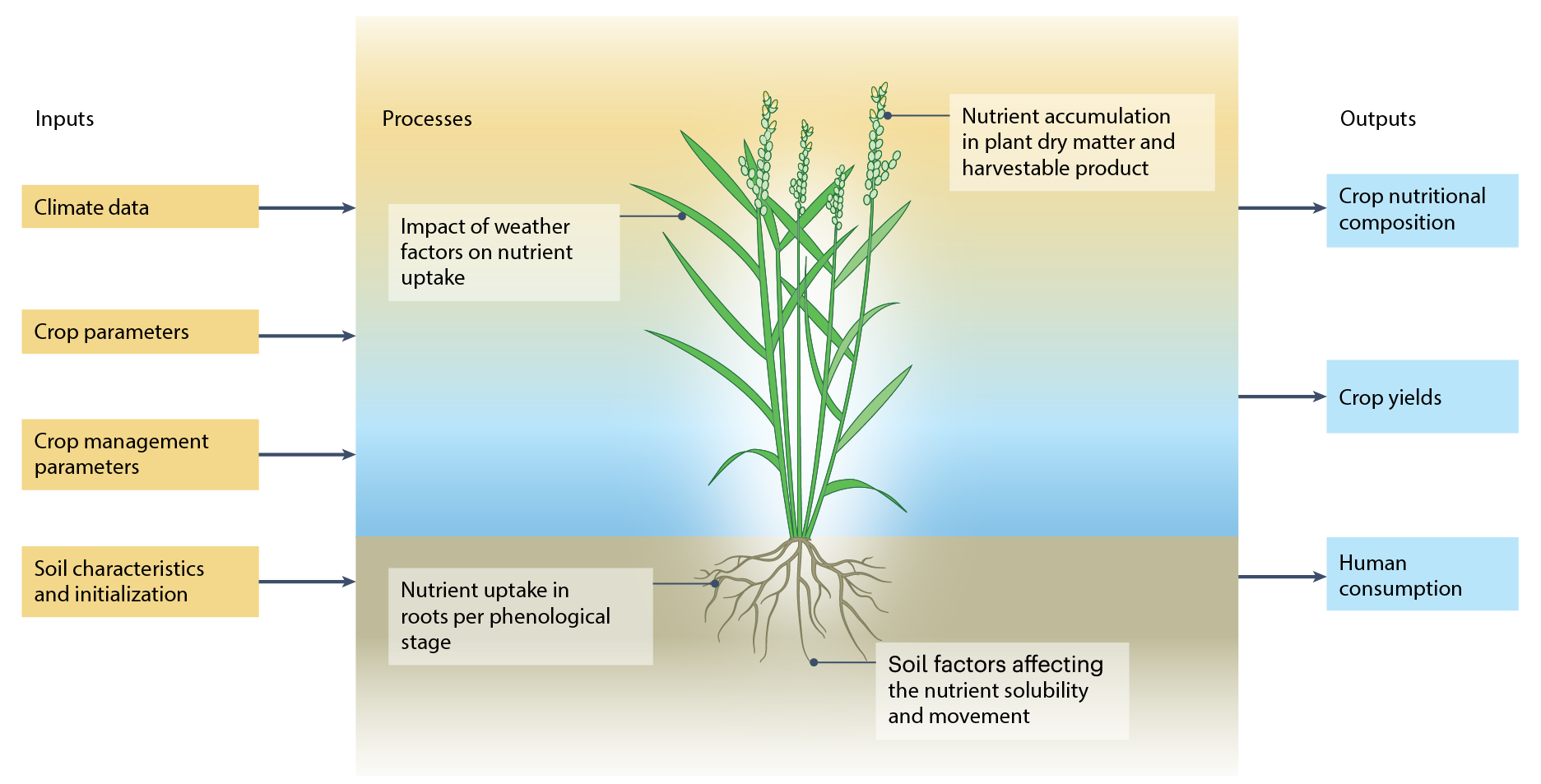Carudcci & Guarin et al. highlight the importance of integrating
nutrient dynamics into crop models
By Natalie Kozlowski
31 October, 2025
More than 2 billion people worldwide face the risk of micronutrient deficiencies due to the limited availability or affordability of nutritious foods. A new paper in Nature Climate Change presents a novel framework for integrating nutrient dynamics into crop models, such as the Decision Support System for Agrotechnology Transfer (DSSAT), while also highlighting the urgent need for experimental datasets to support this nutritional modeling. This integration will offer key insights into how to strengthen nutrition interventions in a changing climate.
Climate change is expected to intensify challenges related to food security and dietary diversity through shifts in crop productivity, greater yield and price volatility, market disruptions, food safety concerns, and reductions in the nutritional quality of the global food supply. These challenges may be further exacerbated by the potential dilution of key nutrient concentrations in staple crops due to rising atmospheric carbon dioxide levels.

Figure 1. Inputs, processes, and outputs to assess nutrient dynamics in crop models.
Carducci & Guarin et al. (2025) highlight the importance of integrating nutrient dynamics into models that simulate plant growth and dynamics by using a new framework to better represent plant nutrient uptake from the soil, nutrient translocation across the plant, and eventual micronutrient concentration in the edible product. This would consist of integrating four main process routines into simulations:
-
- Nutrient uptake in roots throughout their lifecycle based on the initial pool of nutrients available in the soil
- Nutrient accumulation in relation to daily plant mass growth and harvestable product
- Soil factors affecting the solubility and movement of available nutrients in the soil
- Impact of temperature, water stress, or other atmospheric factors on nutrient uptake per phenological stage
The paper marks an important advance in bringing nutrient dynamics into crop modeling and underscores the limited availability of comprehensive datasets beyond staple crops. The authors also call for urgent, collaborative research among climate scientists, farmers, crop modelers, plant biologists, and public health nutrition practitioners to safeguard nutrition under climate uncertainty. By integrating nutrient dynamics into crop models, we also improve our understanding of how climate-driven changes will affect and influence the ability for global populations to receive essential nutrients from the food they consume.
Carducci & Guarin et al. is now available to read in Nature Climate Change here.
Additional Resources:
Read Carducci & Guarin et al. in Nature Climate Change: https://www.nature.com/articles/s43247-025-02724-0
Author Contact Info:
Dr. Bianca Carducci (bianca.carducci@alumni.utoronto.ca)
Dr. Jose Guarin (jose.r.guarin@nasa.gov)
